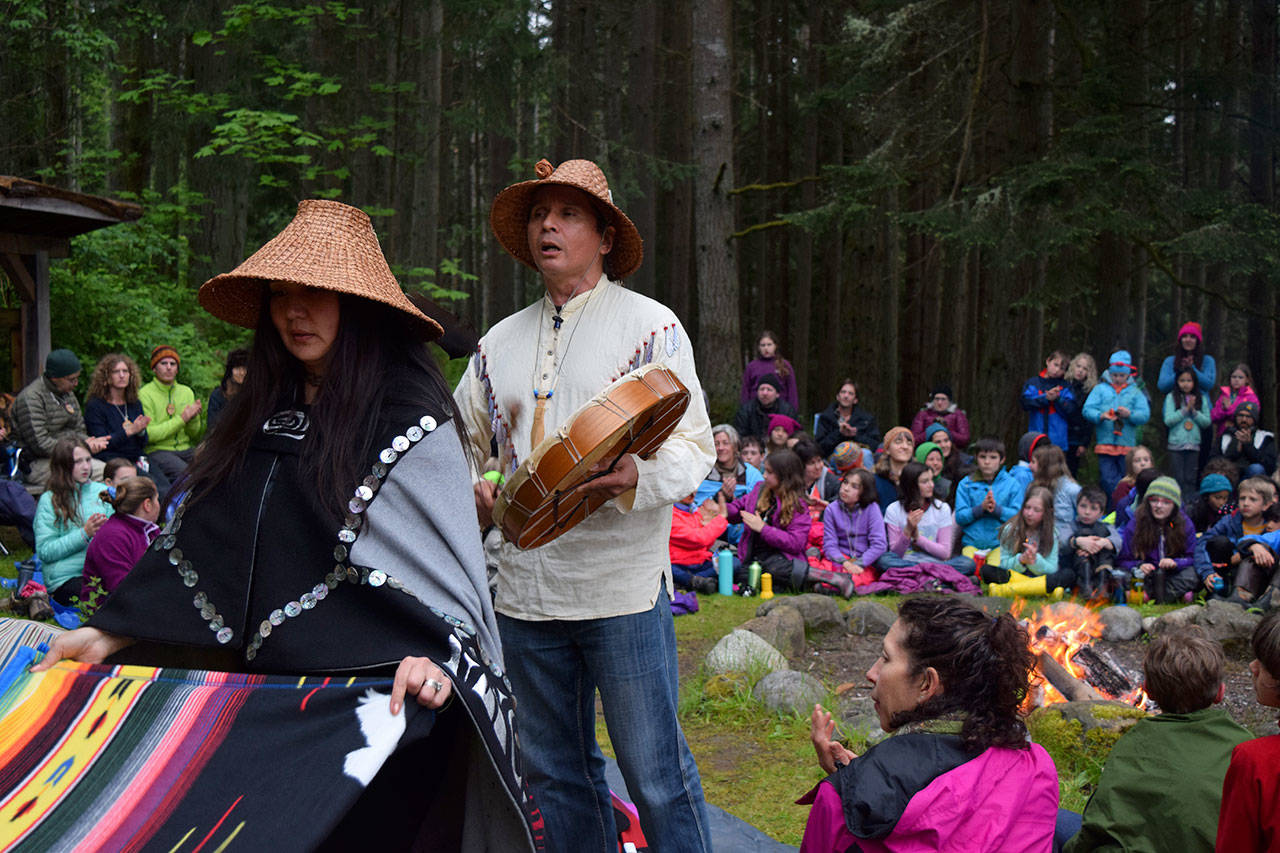Fourth grade is the school year when elementary students learn about Washington State history.
Students typically learn about the Oregon Territory, Lewis and Clark, and how modern day Washington State came to be. But there’s a story that far precedes all of the above: indigenous history.
So instead of simply reading about Native American cultures, students at Whidbey Island Waldorf School experience it alongside tribal elders in the educational program, Potlatch.
“We don’t start teaching history from when the settlers came,” teacher and organizer Angela Lindstrom said. “There’s so much to learn about prior to the settlers, and it’s best taught by those who were here before us. So, we give the students this immersion experience as a way of educating them.”
Potlatch is a three-day experiential learning program that brings fourth grade Waldorf students from across the state to the Whidbey Institute in Clinton. Students dive head first into a variety of Native American cultures as the program coordinators recruit elders from various tribes ranging from the Saanich in British Columbia to the Haida in Southeast Alaska. Lindstrom herself has Obijwa and Cherokee roots, so the students get a broad picture of the diversity of the Native American story.
The students experience the indigenous story through a number of activities and ceremonies. Kids are broken into groups, where teachers familiarize them with Native American games, art and crafts such as drum making and wood working. The night brings the gift giving and eating ceremonies, known as potlatch, where students sit with the elders over a communal salmon dinner.
The word “potlatch” is derivative from a Chinook word that means “to share.” The ideal of sharing is a crucial part to the learning curve.
“For a lot of our nations, we offered to help at first contact with the settlers and wanted to share, and that idea of sharing is what potlatch is all about,” Paul Wagner, a Saanich elder said. “It’s a completely different world from what my people knew in terms of taking and gathering. We would gather to share with others, rather than take for ourselves.”
Wagner and Lindstrom say teaching that way of thinking at such a young age can go a long way, since their “hearts are so open.” It encourages an open-minded approach to whatever the kids encounter in life, whether it be school subjects, people, jobs or life experiences. The goal, Lindstrom says, is to make the students “world citizens.” By that, she hopes when the kids meet somebody who looks different than them, they’ll be able to find similarities and common ground.
According to parent Eric Gelfand, this sort of educational experience is important in the current global climate. To him, hearing and experiencing a different cultural perspective “teaches that one culture isn’t better or more important than another.” With that understanding, Gelfand says the global and political challenges can be faced.
“The cultures that were here first have a lot of good insight and solutions to some of the current problems we face as a nation,” Gelfand said.
“Paul says we’re all in the same canoe,” Lindstrom said. “We have to learn to paddle together so when we hit a wave, we can come up from it.”
That isn’t to say the educators and elders are preaching a political agenda. Rather, the focus is on learning about a culture from the source to get the unvarnished experience, in the process breaking barriers and stereotypes. By the end, the kids frequently show signs of the message getting through to them, sharing food at breakfast and asking the elders questions about their culture.
To the elders, their story is a life lesson for students, or as Wagner says, it’s “heart teaching.”
“For a long time, we’ve been told who we are, and we have our own histories,” Wagner said. “When we share those stories, we allow people to see a world that has always been here. For the kids to see that can really change their way of thinking.”


